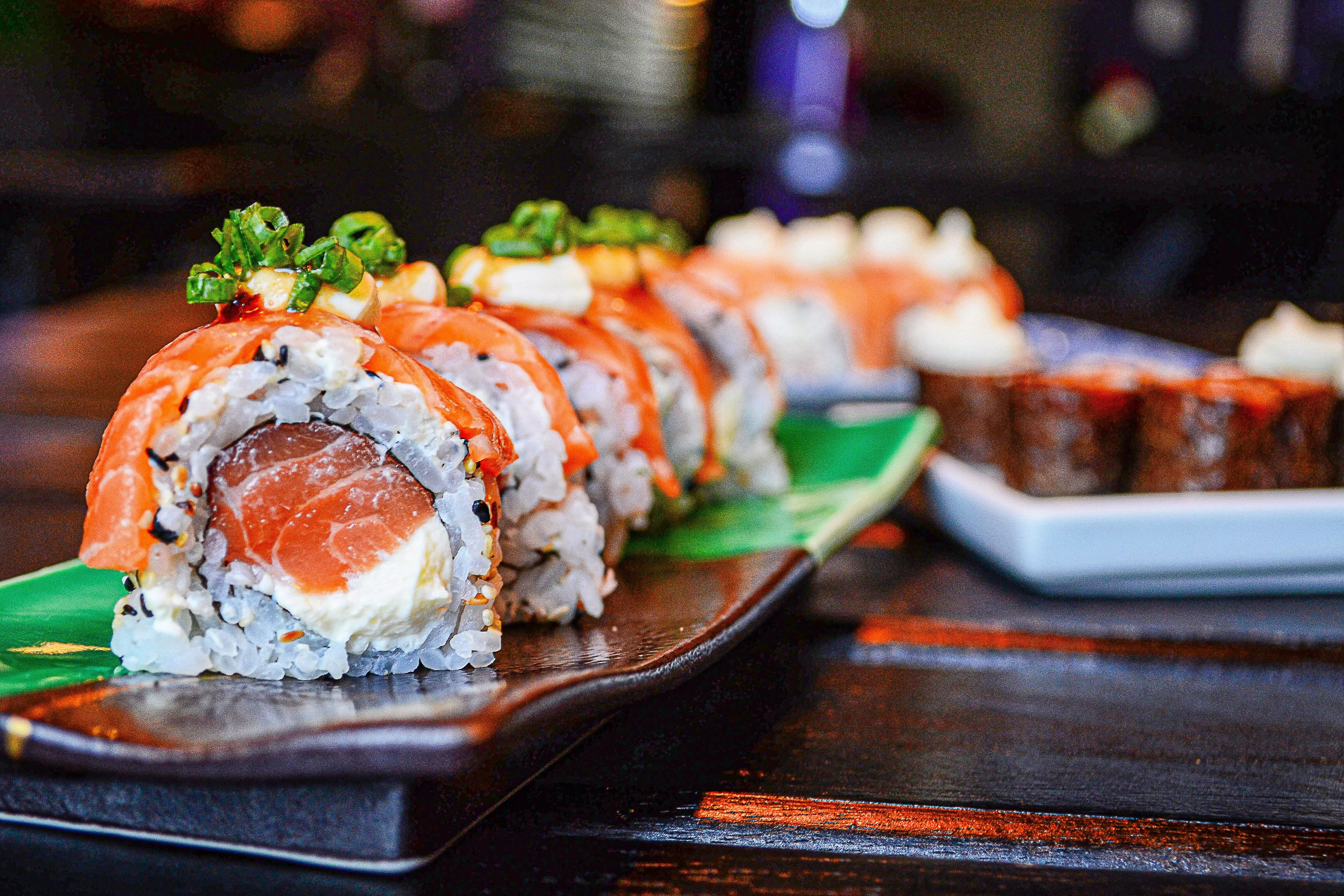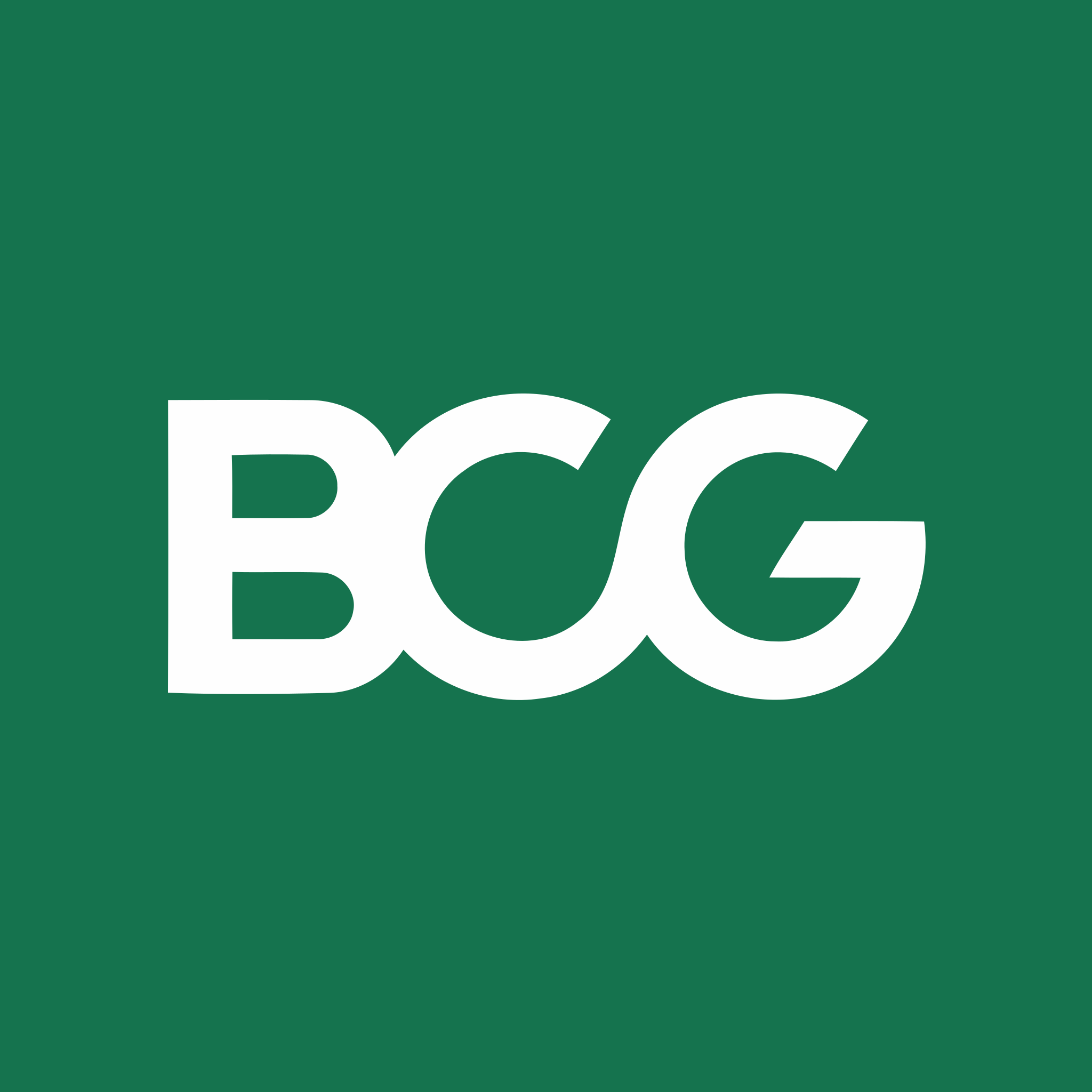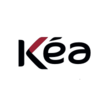Summary of our market study
Since 2020, the German sushi market has continued to show resilience and adaptability despite the drop in the number of taxable restaurants due to the pandemic, with revenues falling to €22.5 billion in 2020 from €31 billion. However, demand for sushi remains strong, particularly among younger consumers who value convenience over quality. The trend towards home delivery and the growing number of supermarkets offering sushi, including innovative shop-in-shop concepts, have fuelled market growth. Sushi Daily and Eat Happy are notable players capitalizing on this trend, with the former boasting around 700 sushi bars across Europe. Online food ordering, including sushi, which holds a significant 21.1% share of delivery preferences, has also seen considerable growth, indicating the market's move towards digital consumption. Despite challenges, such as rising raw material prices affecting non-traditional restaurants, the market has maneuvered effectively by offering more affordable sushi options in retail spaces, targeting a younger population focused on sustainability and quality.
The evolution of sushi consumption in Germany
The German sushi market has transformed considerably over the years, with this once niche culinary delight finding its place in the mainstream of the country's gastronomic scene. With a resilience that has enabled it to navigate the competitive tide without facing the saturation experienced by some of its European neighbors, notably France, the German sushi market continues to thrive. One of the most remarkable developments in the market is the changing face of demand. The appeal of sushi in Germany is particularly strong among the younger generation, with 39% of total consumers belonging to this demographic. This rise is linked to the trend towards "ready-to-eat" options, which respond to the lifestyles of individual households and a mobile society that favors fast, quality meals. As part of the "ready-to-eat" revolution, sushi's penetration of the snack market has risen dramatically, from around 7% to over 30%. The growth rate of this sector has outstripped that of others, suggesting an impressive 343% increase in the space of a few years. This appetite for sushi is not only felt in restaurants, but also in supermarkets, representing a critical shift towards more accessible and profitable sushi formats. German supermarkets have seen an increase in the presence of sushi, with penetration rising from around 1.6% to figures that demonstrate that this cuisine has become a mainstream staple. Alongside this trend, price reductions averaging 11. 8% have strengthened sushi's position in the food retail sector. Demand is dominated by products such as salmon and tuna, which collectively account for 68% of German sushi consumption preferences. This is in line with global trends, where these two fish are often synonymous with sushi. In a nod to the ten-year transition of the sushi market in Germany, sushi restaurant revenues, despite the decline in the physical number of establishments, have not fallen significantly. Even in the face of the COVID-19 crisis, when the catering sector dropped to around 22.5 billion euros from 31 billion euros the previous year, sushi establishments proved resilient. This resilience is reflected in estimated analyses which show that the sushi market in Germany is valued at something like 300 million euros. Sushi consumption is a mix of tradition and convenience. A significant proportion of Germans, around 29.2%, continue to frequent traditional Japanese restaurants, but the growing appeal of supermarket sushi bars highlights a market that is adapting and reacting.
The main players in the German sushi market
As the German sushi market continues to thrive, several key players have emerged, distinguished by their innovation, adaptability and keen understanding of consumer preferences. These pioneers have not only catalyzed market growth, they have also redefined standards of quality and convenience in the sushi industry. Here's an overview of the most influential sushi suppliers in Germany:
- Sushi Daily
Forerunner of the sushi revolution in supermarkets, Sushi Daily has carved out a niche for itself with its on-site fresh sushi preparation counters in various European supermarkets. Its presence in Germany testifies to its commitment to offering fresher, more affordable and more accessible sushi to the everyday consumer. Sushi Daily's rapid expansion illustrates the successful synergy between sushi artisans and retail convenience.
- Natsu Foods
This brand has capitalized on the German "ready-to-eat" trend by offering a varied range of Asian-inspired dishes, with sushi making up a significant part of its portfolio. Natsu Foods caters to a health- and environment-conscious population, emphasizing environmental sustainability and the quality of its ingredients. Its products are staples in German supermarkets, attracting young consumers who appreciate quick, healthy meal choices.
- Happy eating
With an ethos that aligns perfectly with the modern lifestyle of people on the move, Eat Happy has gained popularity by emphasizing the freshness of its products. It has mastered the art of integrating sushi bars into supermarkets, offering customers a "takeaway" solution without compromising the sushi experience. Eat Happy's model is testimony to the success of its strategy to make sushi an everyday pleasure for as many people as possible.
- Traditional Japanese restaurants
While brands such as ZENKICHI in Berlin and Senju in Mannheim may not boast the staggering sales of some of the larger chains, they are the guardians of authentic Japanese cuisine in Germany. These restaurants serve as culinary beacons for those seeking a more traditional sushi experience, with the nuances and rituals that accompany Japan's rich culinary heritage.
- Delivery services
As the trend towards home meal delivery continues to grow, sushi has become a favorite among German consumers. The rise of delivery services and platforms has taken sushi from the ambience of the restaurant to the comfort of home, further boosting its popularity across the country. The pioneers of this segment are adapting to this new dynamic and ensuring that sushi remains an essential part of the German fast-food scene.
to understand this market
Detailed content of our market study
 Inforamtion
Inforamtion
- Number of pages : 35 pages
- Format : Digital and PDF versions
- Last update :
 Summary and extracts
Summary and extracts
1 Market overview
1.1 Presentation and definition of the sushi market in Germany
Sushi is a dish of Japanese origin based on vinegared rice (shari), and another ingredient (neta), most often raw fish (tuna, salmon etc.). The recipe is extremely popular in the world.
There are different types of sushi but the main ones are :
- Makis - roll-shaped sushi wrapped in seaweed
- Temaki - the preparation is similar to maki, in the form of a cone
- Nigiri - a slice of raw fish on an oval shaped rice ball
Sushi is mainly served in restaurants, but the current dynamism of the sector is mainly due to the popularity of this dish around the world as a star of ready-to-eat. Thus, it is increasingly distributed in supermarkets and hypermarkets (GMS) and offered for delivery.
The global market is growing rapidly, driven by the dynamism of Japanese restaurants in all regions of the world, led by Asia and North America.
In Germany, sushi was viewed with skepticism a few years ago, but today it is highly sought after and available almost everywhere. Sushi is no longer only available in high-end Japanese restaurants, but also in supermarkets. Sushi is now also an important part of the delivery service and is ensuring rapid growth in the restaurant sector. Today, there are more than 1000 official sushi shops in the country.
1.2 A dynamic global market
Sushi is strongly rooted in Japanese culture and this is strongly reflected in the revenues generated by fish exports in Japan. Revenues were slightly impacted by the health crisis in ****. In general, the trend has been upward since **** and will reach *** billion yen in **** with an increase of **% in * years.
Evolution of the value of exports of fishery products Japan, **** to ****, in billion yen Source: ****
In ****, there were approximately ***,*** Japanese restaurants outside of Japan, a growth of about +**% compared to ****. Since ****, the number of Japanese restaurants abroad has increased *.* times. Asia has seen the strongest growth (***), driven by a sharp rise in average incomes making Japanese food more accessible. The number of Japanese restaurants grew by +**% in Oceania, +**% in Latin America and +**% in North America. [***]
Number of Japanese restaurants by geographic area World, **** Source: ****
1.3 German market shows resilience
The number of restaurants subject to tax in Germany has been in sharp decline for the past decade having lost more than *,*** restaurants between **** and ****. The year **** marked by Covid only reinforced this finding, decreasing the number by *,*** restaurants and reaching **,*** restaurants.
Number of restaurants subject to tax Germany, **** to ****, in thousands Source: ****
Surprisingly, the restaurant market in terms of turnover has been a steadily growing market for many years and reaching ** billion euros in ****. In ****, with the consequences of the crisis, this figure has dropped to **.* billion euros.
Revenues of taxable catering companies Germany, **** - ****, billion euros Source: ****
According to Food Service, which uses data from Bold Data, the number of sushi restaurants will only surpass the symbolic **** mark in ****, reaching **** restaurants. Out of these *,*** brands, two types of restaurants can be distinguished:
Traditional Japanese restaurants: about *** in Germany serving authentic Japanese cuisine; Non-traditional Japanese restaurants: which claim to serve Japanese cuisine but are less careful in terms of traditions and methods;
Number of sushi restaurants Germany, **** to ****, in units Source: ****
To determine the size of the sushi market in Germany, we will make an estimation using the available data: first we estimate the number of Japanese restaurants in Germany ...
1.4 A market in transition that is adapting
A market that has managed to avoid the saturation of its French neighbor:
The German sushi market is a market that, like its European counterparts, has evolved enormously in recent years. On many points, it can be said that it has followed the developments of its French neighbor with a little delay. In the latter, sushi has experienced an explosion over ** years until **** with a multiplication of sales outlets, "you opened a restaurant, and it worked every time" reports a professional of the sector for Le Monde.
The difference, however, was the saturation encountered by the French market in the following years. It does not seem that the German market was saturated. This can be explained by the fact that it was less developed at the time. We can also assume a lesser investment of investment funds, which in France were betting on the fact that sushi would become a mass product like pizza.
And in this respect, they have reinvented themselves:
The Frankfurter Rundschau reports in **** the evolution that the market has experienced: The sector has experienced an increase in the price of raw materials (***), the price increase has prevented the realization of a large-scale coverage of the territory, and ...
2 Analysis of the demand
2.1 A rapidly growing demand
The demand for sushi is indeed more significant among a young population. In a context of more and more individual households and a very mobile society, consumption habits have changed in favor of the "ready-to-eat" food industry. Sushi has an ideal format to meet the demand of a young population, which values fresh and good quality food, but also efficiency.
Ready-to-eat recipes Germany, ****-****, US$ million Source: ****
As we can see from the following graph, the penetration of sushi in the snack market is growing strongly in **** compared to ****, from *.*% to **.*%. This is also the strongest growth (***) among the different snacks proposed here.
Development of the market penetration of snacks Germany, **** to ****, in percent Source: ****
2.2 Salmon and tuna, kings of demand
In Germany, salmon is the most popular fish (***) and consumed in sushi. Closely followed by tuna, these two fish alone account for **% of German preferences. Although this data dates back to ****, this preference does not seem to have particularly changed in recent years.
Preferred fish of Germans in sushi Germany, ****, % Source: ****
Seafood Studie also reports that salmon in sushi is consumed less in Germany than in its European neighbors. This can be explained by the somewhat less developed market as mentioned earlier. Thus, in Germany, in **** on average a person consumes *.** kilograms of salmon in sushi per year, a figure that rises to *.** in England.
A significant proportion of tuna production is destined for sushi production, and the demand associates it with this production, as shown in the graph below. Sushi is one of the first foods that come to mind when Germans think of tuna. This demand is therefore real and these two fish have seen their fishing and their prices increase significantly in recent years.
First Thing That Comes to Mind When Thinking About Tuna Germany, ****, by % Source: ****
2.3 The profile of the sushi consumer
The following graph shows the different age categories according to their consumption of sushi. It is not surprising to see that young people are the biggest consumers and represent almost **% of the total consumers. Surprisingly, middle-aged adults are the ones who consume the least sushi among the * categories proposed.
Age category of sushi consumers Germany, ****, in percent Source: ****
When analyzing this data in more detail, it can be seen that young singles represent more than one in five consumers.
Precise profile of sushi consumers (***) Germany, ****, in percent Source: ****
2.4 A demand which turns to the GMS
In **** the penetration rate of sushi in German supermarkets was only *.*%. [***]
But for the past * years in Germany, sushi has become a staple in supermarket shelves. The target group is young people who love sushi and are looking for freshness, long shelf life and, above all, a sushi box that is more affordable than the one in restaurants.
The introduction of sushi boxes at German discounters has led to a significant price reduction of **.*% for sushi.
In this respect, the brands that distribute in supermarkets, such as the giants, Sushi daily, Eat happy and Natsu food, focus their communication on the concerns of young consumers : respect for the environment, product quality, freshness and finally price. Thus the word "quality" is found * times in the story section of the natsu website, while the notion of "freshness" is found * times in the about us of the site of Eat happy.
3 Market structure
3.1 The salmon supplier segment
The production of salmon: the Norwegian quasi monopoly
The sushi market is highly dependent on fish, the main raw material for sushi. According to the Seafood Study, So essen die Deutschen **% of the salmon in sushi comes from the Atlantic Ocean.
Origin of salmon in sushi Germany, **** % Source: ****
The study adds that of these, **% of the salmon consumed for sushi in Germany comes from Norway, specifically from salmon farming. In ****, the site notre-planete-info reports that, while the number of salmon farming facilities has decreased by **% in ** years (***)
The price of salmon has nevertheless increased significantly: according to indexmundi, in June **** a kilo of salmon was worth an average of €*.*, in June **** this price was €*.*. In November ****, this price goes down to *.*€ per kilo.
Salmon suppliers, in direct link with the market:
The leader in supermarkets, Sushi Daily buys all processed fish in Germany from Deutsche See- a supplier that guarantees fish from sustainable and socially responsible sources, which exclusively sources Norwegian fish. Intermediary players, such as Deutsche See, represent an important segment of the market in that they act as a link between the salmon producers and the food processing industry that processes them. Deutsche See is the market leader in ...
3.2 Distribution channels
There are * main distribution channels.
Japanese restaurants, independent (***); Restaurant chains offering sushi (***); Supermarket departments.
In ****, **.*% of Germans prefer traditional independent Japanese restaurants to enjoy their sushi on site or to take away. Next come sushi found in Asian all-you-can-eat restaurants, and sushi found in the shelves of hypermarkets and supermarkets. [***]
To meet the demand for more affordable sushi, the number of outlets in supermarkets has increased. If in the first years, these sushi are denigrated because their image of freshly prepared products does not remain in the shelves. The strategy finally paid off. Indeed, to give back this image of freshness, more and more large supermarkets in the country have set up bars and stands, shop in shop, where employees prepare fresh sushi in front of customers and pack them in boxes "to go". The forerunner of this trend, Suhi daily, has nearly *** sushi bars in supermarkets throughout Europe.
The success of theshop-in-shopconcept, such as the Rewe to go concept in the Rewe to go supermarkets, goes hand in hand with the ready-to-eat trend, which sushi is perfectly suited to.
3.3 Delivery is key to the development of the market
Still insignificant in ****, the share of food ordered online in Germany has only increased since. The rise of delivery platforms bodes very well for the sushi market, as sushi stands out as one of the most suitable and popular dishes for delivery (***). In addition, the share of the population that sees sushi as a convenient and healthy dish to eat at home is perfectly reflected in this offer
Development of the share of home-delivered food in consumption patterns (***) Germany, **** to ****, in percent Source: ****
On-site consumption retains a large share of the market, **%, but this decreases year on year to give way to home delivery, while takeaway and drive-through have not changed since ****. [***] The state of play in **** is detailed in the graph below.
Distribution of ways of consuming in foodservice Germany, ****, % Source: ****
Finally, this trend is set to continue as indicated by the Dehoga Bundesverband's report on gastronomy in Germany in ****. According to the report, the delivery sector has the best growth prospects, followed closely by the ready-to-eat sector mentioned earlier.
Most Promising Sectors Germany, ****, base *, max *, min -* Source: ****
Regarding the place of sushi among the delivered products, we find it in *th place with almost **.*%, or more than one ...
4 Analysis of the offer
4.1 Average price per type of sushi
The price of sushi varies depending on the distribution channel, the type of sushi but also the additional ingredient (***). In addition, restaurants usually offer platters or packages with an assortment of sushi which again increases the price range at which sushi is sold.
The table below gives the order of magnitude of prices of sushi when sold by a chain or a kiosk in a supermarket (***). The prices of sushi sold in supermarkets are relatively similar.
The prices in non-chain restaurants are more difficult to describe. Indeed, restaurants propose different offers (***) But we must also keep in mind that the consumer is often ready to pay more in a restaurant than in a supermarket.
4.2 The different types of sushi
The German market includes all the traditional sushi known on the European market, the demand for it is roughly similar in each country and therefore the offer is not more or less varied than in one of its neighbors.
Makis - roll-shaped sushi wrapped in seaweed Temaki - similar to maki, in the form of a cone Nigiri - a slice of raw fish on an oval-shaped rice ball California Roll - maki that contains avocado, crab and cucumber (***) Spring Roll : a spring roll Tataki: a slice of fish lightly cooked and marinated in vinegar Chirashi : a bowl of rice with an assortment of toppings Tempura: fried seafood or vegetables
There are also different types of fillings:
Avocado sake : salmon cut in pieces ebi : shrimp and mayonnaise ninjin : finely chopped carrot kappa : cucumber (***) kampyō : dried pumpkin strips, e.g. Hokkaido pumpkin nattō : fermented soybeans okra Oshinko : Takuan (***) pickled radish tamago : omelette tekka : tuna Tofu ume : Umeboshi paste (***)
Nevertheless, the offers are diversifying and we are beginning to identify an opening towards other Japanese or Asian recipes : bento, ramen or bo bun... New trends are emerging on the horizon.
5 Regulation
5.1 Supervision of the restoration and sale of shushis
The sale of sushi must follow the regulations for the sale of foodstuffs: in particular, Regulation (***) No. ***/****, which sets out the rules to be followed in terms of hygiene for foodstuffs of animal origin. [***] The most important point because structuring the market is that the fish must be frozen before being consumed raw.
The sale of sushi must also follow the EDI regulation on hygiene in food handling (***). This regulation defines the prerequisites for the preparation of raw fish in Germany, but also the measures to be taken.
Section ** defines the temperature requirements for processed fish products containing cold rice acidified with rice vinegar < pH *.* (***). This temperature is *°C.
6 Positioning of the actors
6.1 Segmentation
- Planet Sushi Groupe
- Natsu Shop
- Eat happy
- Sushi Daily - KellyDeli
All our studies are available online in PDF format
Take a look at an example of our research on another market!
 Choosing this study means :
Choosing this study means :
Access to more than 35 hours of work
Our studies are the result of over 35 hours of research and analysis. Using our studies allows you to devote more time and added value to your projects.
Benefit from 6 years' experience and over 1,500 industry reports already produced
Our expertise enables us to produce comprehensive studies in all sectors, including niche and emerging markets.
Our know-how and methodology enable us to produce reports that offer unique value for money.
Access to several thousand articles and paid-for data
Businesscoot has access to all the paid economic press as well as exclusive databases to carry out its market research (over 30,000 articles and private sources).
To enhance our research, our analysts also use web indicators (semrush, trends, etc.) to identify market trends and company strategies. (Consult our paying sources)
Guaranteed support after your purchase
A team dedicated to after-sales service, to guarantee you a high level of satisfaction. +44 238 097 0676
A digital format designed for our users
Not only do you have access to a PDF, but also to a digital version designed for our customers. This version gives you access to sources, data in Excel format and graphics. The content of the study can therefore be easily retrieved and adapted for your specific needs.
 Our offers :
Our offers :
the sushi market | Germany
- What are the figures on the size and growth of the market?
- What is driving the growth of the market and its evolution?
- What is the positioning of companies in the value chain?
- Data from several dozen databases
5 reports pack (-15%) DE Germany
- 5 reports at €75.6 excluding VAT per study to choose from our German catalogue for 12 months
- Save 15% on additional studies purchased
- Choose to be refunded any unused credit at the end of the 12-month period (duration of the pack)
See the terms and conditions of the pack and the refund of unused credit.


















